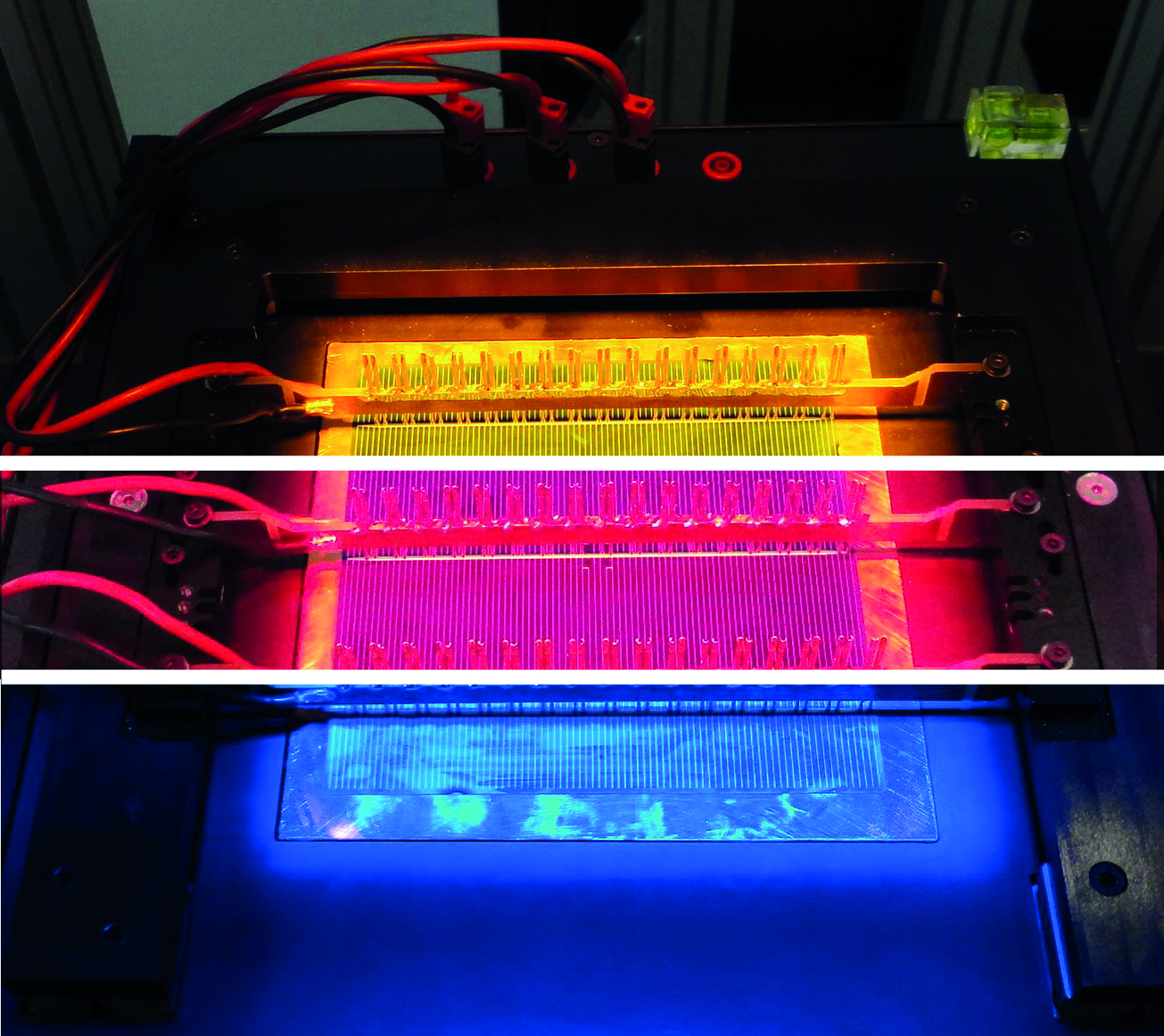Fraunhofer CSP relies on a new generation of LED sun simulators
The Fraunhofer Center of Silicon Photovoltaics CSP extends its laboratory inventory by an LED-based sunlight simulator to assess solar cells. The high flexibility with regard to the measurement parameters and the higher measuring precision under LED illumination permits a closer view on the solar cells.

Light is not light – sunlight on earth displays a variety of different qualities which depend on where you are, the time of day, and the prevailing weather conditions. Decisive factors are the light's angle of incidence and the composition of the atmosphere. To be able to account for environmental influences in solar cell research and to achieve a maximum electricity yield such influences have to be simulated in the laboratory. This is what is now happening at the Fraunhofer Center of Silicon Photovoltaics CSP in Halle (Saale).
The group of Dr. Christian Hagendorf applies, for example, artificial suns to optimize solar cells. The solar cells of various manufacturers and technologies possess different spectral sensitivities. »For a correct analysis and comparability of the power values we not only need a precise reproduction of the solar spectrum, but also a modifiable spectrum in order to guarantee for an accurate measurement of the electricity," says Hagendorf, Director of the group Diagnostics of Solar Cells at the Fraunhofer CSP. This permits to make yield predictions under realistic conditions for various regions and daytimes. The ability to modify the light spectrum additionally accounts for special measurements carried out on module components using rapid tests.
With the latest generation of LED suns, like the Sinus-220 from Wavelabs, the Fraunhofer CSP now disposes of presumably the best reproduction of the sun ever. As opposed to conventional sun simulators, i.e. gas-loaded flash lamps, LED devices permit an individual mixture of light components based on LEDs of different color. Another advantage is the intelligent optics which allows an overlay of various wavelengths like in sunlight to hit the solar cell, and not one wavelength after the other.
The parallel integration of infrared and electroluminescence cameras, in turn, facilitates the team of Dr. Marko Turek, Department of Electric Characterization at the Fraunhofer CSP, to conduct studies on the correlation of material quality and efficiency and hot-spot stability.
In addition, the LED technology permits measuring high-efficiency solar cells also with very long exposure times. »These can be tuned at will and thus provide an essential advantage over conventional flashlight-measuring systems,« says Turek. The light intensity of the LEDs is also variable over a broad range. »Altogether, we can realize a variety of complex measurement processes at Fraunhofer CSP and transform them into rapid and precise research results,« Turek says finally.
 Fraunhofer Center for Silicon Photovoltaics CSP
Fraunhofer Center for Silicon Photovoltaics CSP